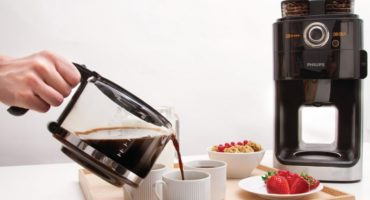There are a huge number of various devices for making coffee. But due to its ease of use at home and accessibility, they have gained wide popularity. drip coffee makers.
One of the important elements of these devices is a filter, the main task of which is filtering ground coffee during brewing. The taste and aroma of the drink depends on the quality of the filter used.
What filters are available?
In the last century, an enterprising housewife from Dresden, Melitta Benz, came up with a coffee filter. She took an ordinary schoolboy blotter, folded it in the form of a funnel, into which ground coffee was poured. Placing this simple structure over the cup, she slowly poured boiling water through it. So she got her aromatic coffee, and all the thick remained on a piece of paper.
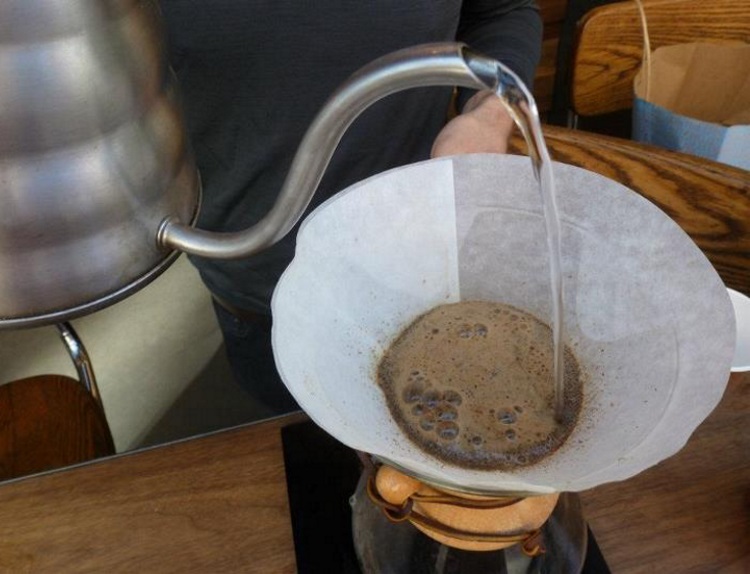
Vintage brewing method
In modern conditions, there are many coffee filters that are made from different materials. Consider the most popular options.
Paper filters for coffee makers
They are made in the form of funnels or baskets, with smooth or with wavy walls - it all depends on the model of the selected coffee maker.
Flat-bottom filters are convenient for making drip coffee, while conical filters are suitable for drip coffee makers or for brewing in a cup once. Wavy options are ideal for the Purover, as they provide an even distribution of water.

For their production is used:
- Clean filter paper unbleached, natural brown, uncoated at the seams (perhaps the best option).
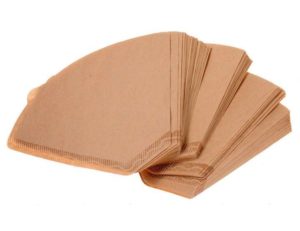
Organic Filter Example
- White paper obtained by bleaching with chlorine or oxygen bleaches;
- Bamboo fiber.
A feature of paper filters is the ability to remove diterpenes (oil components) from coffee beans, which can cause an increase in cholesterol in human blood.
Among the significant "advantages" note:
- Easy to use (easy to install and replace);
- Suitability for any kind of grinding, even for powdered coffee;
- Does not “give” the drink a foreign taste or smell;
- Disposable use (no need to clean the filter afterwards);
- Biodegradability of the material - no harm to the environment;
- No expiration date;
- There is no concentration of pathogenic bacteria, which is characteristic when improper care for reusable elements of the coffee machine, i.e. full compliance with sanitary standards.
- Affordability in price.
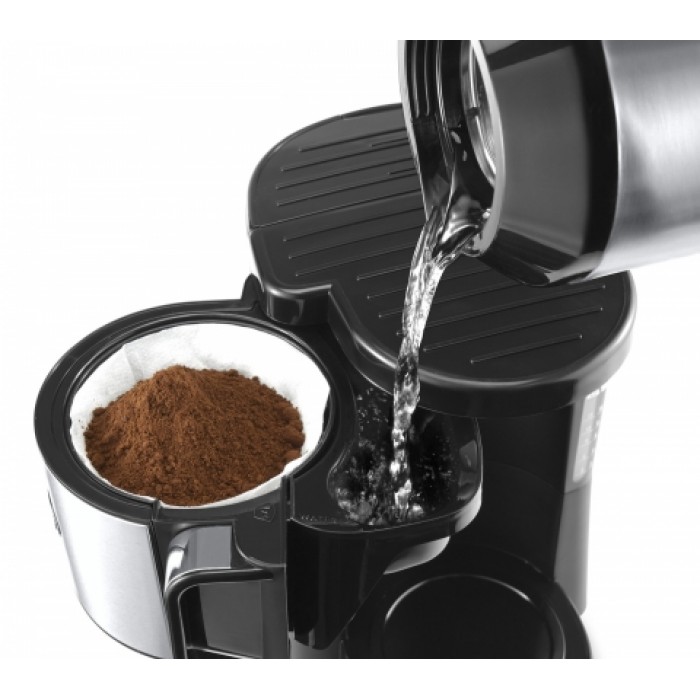
Using a paper filter for a coffee maker
With such advantages, paper filters for a coffee maker still have a drawback - a one-time use, which means that you will have a constant expense. It is important to monitor their balance in the house in order to replenish the stock on time.
Fabric filters
You can replace paper with fabric options that are made from hemp, organic cotton, muslin fabric. Their advantages:
- environmental friendliness
- simplicity,
- a small noble precipitate in the finished drink, since the pores in the fabric are slightly wider than in the paper counterpart.
The inconvenience in the use of such products is the rapid contamination and the need for constant cleaning.

Fabric option
Nylon filters
The design is a plastic frame covered in nylon.
Basically, most coffee makers are equipped with such filters. According to the recommendations of manufacturers, it can be used up to 60 times, then be sure to change it.
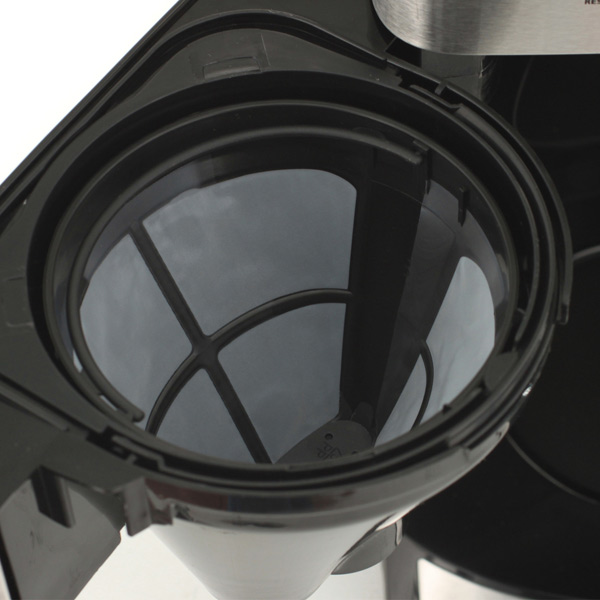
Nylon filter
In terms of money, this option is the most profitable.
The disadvantages of the products include:
- The need for thorough cleaning after brewing;
- Compatibility only with coarse grinding coffee.
Gold filters
They are made, of course, not of gold, this is an improved version of a nylon filter, the surface of which is coated with titanium nitride. So we have achieved a significant improvement in the quality and durability of products. Their disadvantages are the same as those of nylon products.
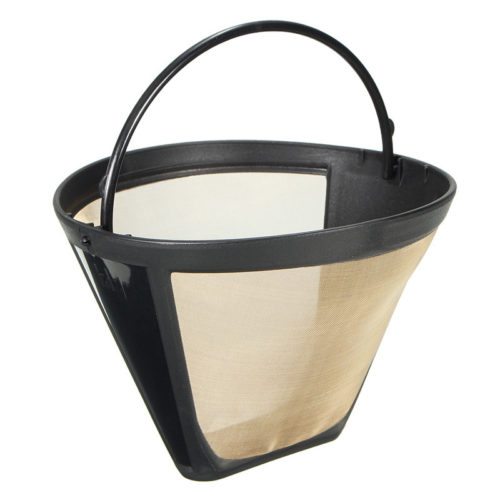
Porcelain, plastic, steel products are less popular than others.
What are the sizes of filters?
In the coffee shop you will find such products of various sizes - from 1 to 12. Carefully look at the packaging: the indicated sizes should coincide with the size of the capacity of your drip coffee maker or drip funnel.
In the case when the size 01 is written on the prover, then the filter element must be bought the same size. For drip coffee makers, sizes from 02 to 04 are suitable. Smallest items are suitable for brewing in a cup.
How to make a filter for a drip coffee machine with your own hands
What to do quickly when faced with the need to replace the filter, and their supply at home has run out? You can easily solve this problem at home.
The simplest material that will be needed for this is paper.
Important: Before proceeding, it is necessary to check the quality of the paper when exposed to water. Too dense material will increase the filtration time, and poor-quality loose cellulose, when it comes in contact with boiling water, will simply “crack” and it will not work.
Also, do not use paper with printing ink and glue, photographs, this will significantly spoil the drink and can even harm your health.
Dense white or brown napkins or paper towels are convenient in this case.
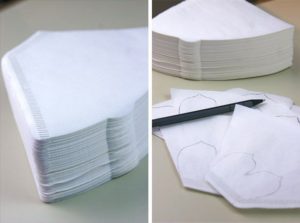
The last option is the most successful, since the towel is characterized by high porosity, therefore, it quickly skips
The last option is the most successful, since the towel is characterized by high porosity, therefore it quickly passes water, and it holds up large particles of coffee well. Also note that filters of any size can be cut from a towel.

For example: take a saucer and circle it on a piece of towel. Use a pair of scissors to cut a square or circle, fold it in half, and then again in half. Pour ground coffee into such a homemade filter and insert it into the funnel, and then into the cup. Pour boiling water slowly through the prepared structure and get a fragrant and invigorating drink.
If suddenly there is no quality paper at hand, you can use the fabric option - a bandage, a cotton towel, gauze or a sheet.
An important detail: the fabric used must not be dyed, because otherwise, when exposed to hot water, “tasteless” chemical dyes may be added to the drink.
We recommend taking a clean medical bandage or gauze. Just be sure to rinse the material thoroughly before brewing to prevent a medicinal taste from the prepared beverage.
For a more thorough filtration, fold the cheesecloth into several layers.
A very interesting option for the manufacture of a filter element will be the use of kapron female tights as a material.
A cut square or a circle of tights will be a wonderful coffee filter. In addition, you can use it several times.
Also in the list of homemade metal strainers from teapots. A clear disadvantage of their use is the small size and poor bandwidth. Such strainers are usually very quickly clogged with a coffee mixture, so they need constant cleaning. Fans do not advise making coffee in this way - the drink is unsaturated and non-aromatic.
The main problems in using homemade filters.
It is important not to forget that all of the above materials for the independent manufacture of filter elements will only temporarily help you, without proper hygienic processing, they are suitable only for one-time brewing.
Make stocks of such products on time, because it is easy to buy them at any specialized store.



